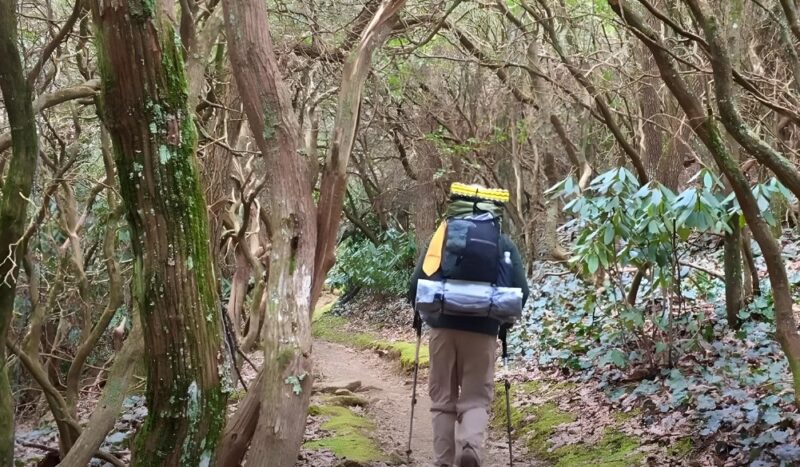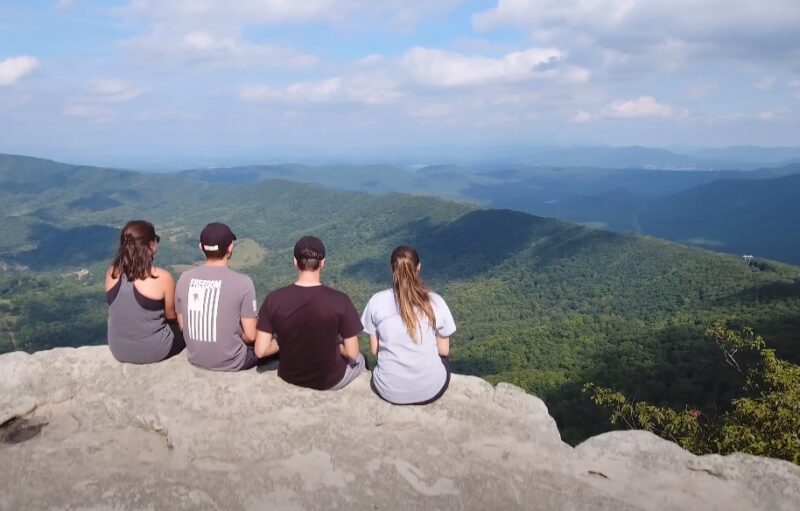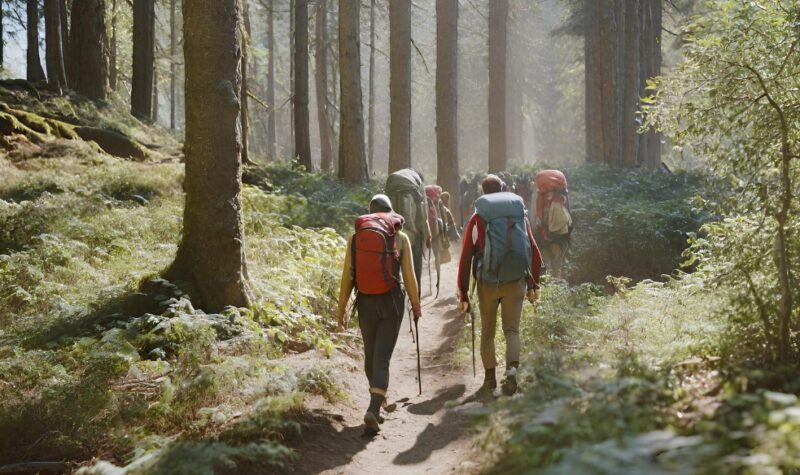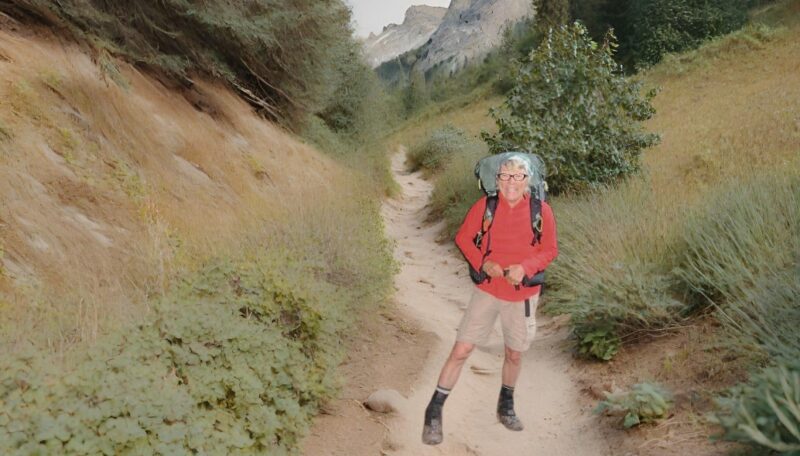In the vast wilderness of the Appalachian Trail, stories of adventure, endurance, and sometimes tragedy unfold. Among these is the heart-wrenching tale of Geraldine Largay, a name that resonates with both awe and sorrow in the hiking community. Geraldine’s journey, which started as a trek on one of America’s most renowned trails, turned into a harrowing survival story and a poignant reminder of the unpredictability of nature.
The Disappearance and the Prolonged Search
Geraldine “Gerry” Largay, at 66, embarked on a journey that many dream of but few undertake – hiking the Appalachian Trail. Stretching approximately 2,190 miles across 14 states, this trail is a mecca for hikers seeking to connect with nature and challenge their limits.
Gerry’s hike, which began in Tennessee with the destination of Maine in sight, was a testament to her adventurous spirit and love for the great outdoors. Tragically, Gerry’s adventure took a dire turn in July 2016. Venturing off the trail for a brief moment, she found herself disoriented and lost in the dense Maine woods.
This simple misstep set off a chain of events that led to one of the most extensive and emotionally charged searches in the history of the Appalachian Trail. Despite the efforts of multiple agencies and numerous volunteers, the search was marred by misinformation and fruitless leads, complicating the efforts to locate her.
Gerry, a seasoned hiker, understood the gravity of her situation. She utilized her survival skills to the best of her abilities, setting up camp and rationing her food supplies. The days turned into weeks, with Gerry’s hope of rescue diminishing as each day passed.
Her plight was made even more poignant by the journal she kept, a record of her thoughts, fears, and a heartfelt message to her family, hoping they would one day find closure. The discovery of her remains in October 2015, a full two years after her disappearance, brought a tragic end to the search. Found just two miles off the trail by a logging surveyor, it was a stark reminder of how close yet how far she was from potential rescue.
The Maine Warden Service’s release of over 1,500 pages of files provided insight into the extensive efforts to find her and the challenges faced by the search teams. Gerry’s story raises several critical points about hiking safety and search and rescue operations. Her experience underscores the importance of preparedness, the need for effective communication tools, and the complexities involved in wilderness rescue efforts.
The Appalachian Trail, while a place of beauty and challenge, is also a reminder of nature’s unforgiving elements. Hikers venturing into these environments must be equipped not only with physical provisions but also with the knowledge and skills to navigate and survive unforeseen circumstances. In remembering Geraldine Largay, we are reminded of the unpredictable nature of life and the relentless spirit of those who dare to explore.
Her journey, though ending in tragedy, continues to resonate with hikers and adventurers, serving as a poignant reminder of both the beauty and dangers of the wild. Her story is not just one of loss but also of the human spirit’s resilience and the enduring love of a family that sought answers in the face of uncertainty.
How Dangerous are Appalachian Trails?

The Appalachian Trail (AT) is a remarkable journey, offering an immersive experience in the heart of nature. However, it also presents various risks and challenges. It’s essential to recognize these dangers to ensure a safe and enjoyable adventure.
The Reality of Risks on the Appalachian Trail
Over 100 recorded deaths have occurred on the Appalachian Trail, a statistic that, while concerning, represents a tiny fraction of the millions who hike the trail safely each year. Causes of fatalities range from natural hazards like falling trees and extreme weather to health issues such as heart attacks and, very rarely, criminal activities including murder. Each year, numerous hikers and volunteers visit the AT without incident, a testament to the trail’s overall safety when proper precautions are taken.
Natural Hazards

Falling trees, a result of dense forests and severe weather, are among the common causes of fatalities on the AT. Weather conditions significantly affect hiker safety, with risks of hypothermia, heatstroke, or injuries due to slippery conditions. Hikers must remain vigilant about weather forecasts and trail conditions.
Health Concerns
Long-distance hiking places considerable physical stress on the body. For those with pre-existing health conditions, especially heart issues, the risk is higher. Consulting healthcare professionals and training adequately before embarking on a thru-hike is crucial.
Criminal Activities
While extremely rare, there have been cases of violent crime on the AT. For example, the 1990 murder of two hikers in Pennsylvania serves as a stark reminder of the need for personal safety and situational awareness.
Hiker Experiences and Safety Tips

Many hikers, including solo female hikers, have safely and enjoyably traversed the AT. However, they often need to be extra cautious, particularly regarding personal safety. For instance, hitchhiking, a common practice to reach towns off the trail, requires careful judgment. Trusting one’s instincts, avoiding rides from intoxicated drivers, and taking safety precautions such as sharing vehicle information with a friend are recommended practices.
- Gear and Equipment: The right gear is critical for AT hikers. Lightweight, durable, and weather-appropriate clothing and equipment are essential. A reliable tent, sleeping bag rated for various temperatures, and a portable water filter can make a significant difference in comfort and safety. You also learn how to use different tools, from how to tie a loop knot to starting a fire in the wild.
- Navigation Tools: In addition to a cell phone with offline maps, carrying a physical map and a compass is advisable. GPS devices specific for hiking can offer added security, especially in areas with limited cell service.
- Food and Water Management: Knowing how to manage food and water supplies is crucial. Hikers should plan for adequate nutrition, focusing on high-energy, lightweight food items. Water sources along the AT are plentiful, but treating water to prevent illness is a must.
- Wildlife Encounters: The AT is home to diverse wildlife, including bears and snakes. Understanding how to store food properly using bear canisters or bear bags and knowing what to do in a wildlife encounter is important for safety.
- Mental Preparedness: Long-distance hiking is as much a mental challenge as a physical one. Understanding one’s limits, recognizing signs of fatigue, and knowing when to rest or seek help are vital for a safe hike.
Social Media and Safety
For solo hikers, sharing real-time locations on social media can be a safety concern. Delaying posts or keeping accounts private helps in maintaining safety while still enabling hikers to share their experiences.
Interactions on the Trail

The trail community is generally supportive and kind. However, hikers should exercise discretion in interactions. Using brief greetings, avoiding detailed personal information, and being prepared with excuses to politely decline unwanted company are effective strategies.
- Community Support: The AT is known for its strong sense of community. Many hikers find support and camaraderie at trail shelters, hostels, and trail towns. Engaging with this community can provide emotional support and valuable trail advice.
- Dealing with Uncomfortable Situations: If a hiker encounters someone making them uncomfortable, like a wild animal, it’s important to trust their instincts. Joining other groups, changing plans, or even seeking help from authorities are viable options.
Personal Safety Strategies
Ultimately, the key to a safe and enjoyable AT hike lies in preparation and awareness. Hikers should plan their route, carry a well-stocked first aid kit, hike in groups or inform someone of their itinerary, and use appropriate gear for the trail conditions. Carrying a charged cell phone with offline maps and weather apps can be a lifesaver.
- Emergency Preparedness: Hikers should carry a basic survival kit, including a whistle, a mirror for signaling, a fire starter, and an emergency blanket. Knowing basic survival skills can be a lifesaver in unexpected situations.
- First Aid Knowledge: Beyond carrying a first aid kit, having basic knowledge of first aid, such as how to treat minor injuries, recognize symptoms of serious health issues, and when to seek emergency assistance, is crucial.
- Regular Check-ins: Regular check-ins with a trusted contact can provide peace of mind for both the hiker and loved ones. Establishing check-in times and what to do in case of missed check-ins is a good practice.
- Local Knowledge: Familiarizing oneself with the local flora and fauna, understanding the terrain, and knowing the locations of nearby towns and emergency services can enhance safety on the trail.
- Joining Hiking Groups or Forums: Before embarking on the trail, joining online forums or local hiking groups can provide insights, updated trail conditions, and the opportunity to find hiking partners.
FAQs
Where does at trail end in Maine?
The Appalachian Trail (AT) ends at Mount Katahdin, the highest peak in Maine, which is located in Baxter State Park. Hikers planning to climb Katahdin should check with the park or the Maine Appalachian Trail Club for current conditions.
Who was the 19 year old hiker missing in NH?
Emily Sotelo, a 19-year-old woman from Westford, Massachusetts, went missing while hiking in the San Gabriel mountains in New Hampshire on November 22, 2022. Her body was found on November 23, 2022, by Fish and Game conservation officers on Mount Lafayette.
What celebrity was the lost hiker?
Julian Sands, a British actor known for his roles in A Room with a View, The Killing Fields, and Naked Lunch, was the lost hiker who disappeared in the California mountains on January 13, 2023. His remains were found on June 26, 2023, near Mount Baldy, where he was last seen.
Last Words
Geraldine Largay’s story, a poignant blend of human resilience and tragedy, underscores the unpredictability of nature and the critical importance of preparation and safety awareness. Her experience serves as a somber reminder of the risks inherent in such adventurous undertakings, emphasizing the need for hikers to be well-prepared and vigilant.
